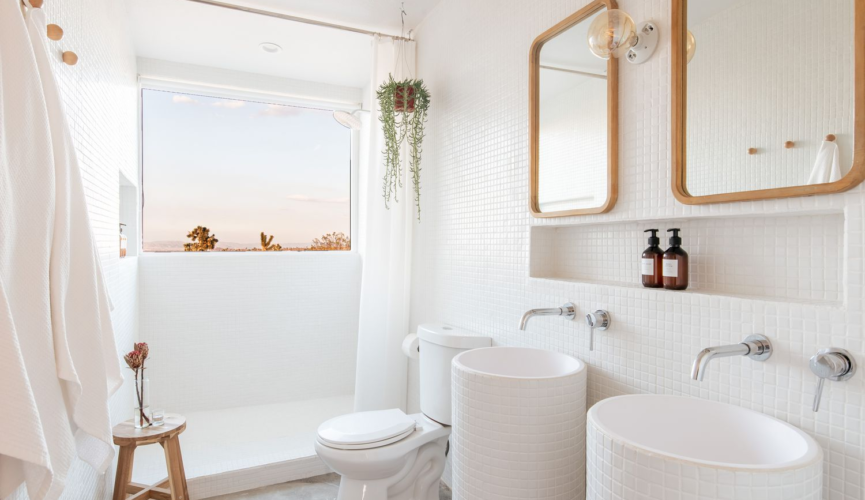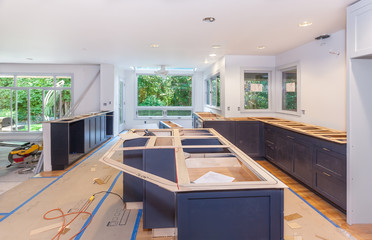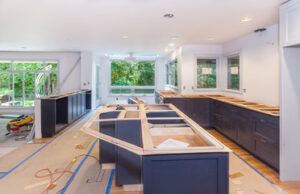When remodeling your bathroom, the first step is finding a contractor. You should vet contractors thoroughly and meet with them before you sign a contract.
Keep in mind that even small changes could require a permit. It’s also important to understand that your renovation will create dust and disruption. Contact Bathroom Remodeling Richmond VA now!

A remodeling project that isn’t properly planned can be a costly disaster. That’s why crunching the numbers and determining a realistic budget before beginning is important. Once you know how much you can afford to spend, you’ll be able to narrow down the choices and select materials that will give your bathroom a custom look for less.
Unlike a simple makeover or replacing old fixtures, a full remodel will involve rerouting plumbing and electrical lines and changing the footprint of your bathroom. This can be as simple as moving a toilet or tub from one side of the room to another or as complex as a complete gut renovation. This type of transformation is best left to a professional who can help you create a new layout and design that suits your needs.
In addition to rerouting plumbing, a complete bathroom remodel will often include a new tub, shower and/or sink. Choosing these elements early in the design process will ensure that they are compatible with your space and design aesthetic. You’ll also want to consider the height of your sink and toilet so they are easy to use.
Another consideration is the amount of storage you need. You’ll want to choose a vanity with plenty of drawer and cabinet space for linens, towels and other supplies. If you’re short on floor space, consider wall-mounted or freestanding storage that blends into the walls to save space.
When selecting a bathroom remodeling pro, be sure to ask for referrals and a portfolio of completed projects. It’s essential to find a qualified, experienced professional who has the proper credentials and insurance, and brings a wealth of ideas and resources to the table. By taking the time to find a great fit, you can rest assured that your bathroom renovation will be both beautiful and functional. This will add value to your home and improve its overall livability.
A well-lit bathroom can significantly impact the overall mood and appearance of a room. Ambient bathroom lighting can come from recessed or other ceiling fixtures, pendant lights over the sink, sconces on the wall, or flush mounts above shower and bath areas. Ideally, these lights should be on dimmers so that the light level can be adjusted depending on the mood or task at hand.
Choosing the right lighting fixtures also involves understanding how much light each fixture needs to produce to effectively illuminate a bathroom and avoid unflattering shadows on faces or items in storage. A good rule of thumb is that you should use a wattage equivalent to about 25-35 watts for each 50 square feet of floor space.
Any lighting that goes above shower or bathtub areas must be rated for wet conditions. This is not only necessary for safety, but it can also extend the life expectancy of these fixtures. Additionally, any electrical wiring in the bathroom should be shielded from moisture for additional safety and longevity.
If you’re remodeling a small bathroom, you can make it feel larger by using a few simple tricks. One is to install a large mirror, which can visually expand the room. Another is to use light colors on the walls and ceilings, which will help the room feel bigger and more open. Finally, choose compact fixtures for vanity lighting and sconces on the wall to save space.
It’s also important to consider the toilet in a bathroom remodel. Although you may be tempted to keep your existing toilet in order to save money, it’s best to replace older models with newer units that are more efficient and offer improved water savings and features such as comfort height and auto-flush.
It’s crucial to be as detailed as possible when discussing your bathroom remodeling project with your contractor. Having a clear plan of how you want the bathroom to look in the end will save time and money for both parties. This means that you should have a general idea of the layout and dimensions of the space, and have photos or samples of the finishes and fixtures you’d like to use. This will help your contractor get started quickly and ensure that your vision is carried out properly.
Remodeling a bathroom is about much more than just giving it a fresh coat of paint or replacing the vanity and fixtures. It can also be about increasing efficiency and aesthetics, making the space more usable and livable for the entire family, and upping the value of your home.
A remodeling project can be as simple or extensive as you wish, but a well-planned design is crucial to success. Whether you are adding a few storage upgrades or completely renovating the room, it’s important to plan ahead and consider all your options before getting started.
If your bathroom lacks storage, look at ways to maximize what you have without compromising the room’s overall layout. This may include extending the sink countertop over the toilet for extra counter space, carving recessed niches into walls or showers to hold bottles of shampoo and other supplies, or installing a ladder-style shelving unit above the toilet.
Recessed storage adds extra space without stealing square footage by carving nooks and niches into existing walls or showers to store items like towels, shampoo and cosmetics. You can also install a roll-out organizer inside a deep cabinet, add toe-kick drawers at the bottom of your cabinets, or mount shelves over your door for extra storage.
Organize your existing drawers and cabinets by sorting items into distinct categories. This not only maintains a tidy appearance but also makes it easier to locate items when needed. For example, store cleaning products and toiletries in different areas to prevent cross-contamination.
Hanging organizers on doors and cabinet backs can be a great way to store small accessories like cotton balls, Q-tips, and hair ties. You can also use a ledge or shelf as a place to display decorative items and keep frequently used items within easy reach.
Removing or protecting items you want to avoid getting dusty or damaged during a bathroom remodel is a good idea. It would be best to plan where to stash your daily essentials while the room is under renovation so you don’t have to leave the house to grab them. Lastly, remember that construction is messy, and you’ll likely need to clear out the area to complete the work.
Bathrooms face a unique set of challenges, including high humidity, frequent temperature changes, and direct exposure to water. That’s why it’s important to use durable materials that will hold up well to the elements and look good for a long time. Durable surfaces such as ceramic tile, natural stone, and vinyl sheet and tile flooring are popular choices for bathrooms. They’re easy to clean, withstand moisture and harsh cleaning chemicals, and are slip-resistant—a necessity in any wet room.
While it may be tempting to cut corners on your DIY bathroom remodel, using low-quality materials can actually end up costing you more in the long run. Cheap plastic or particle board cabinets can swell and fail in damp environments. Investing in high-quality cabinetry, porcelain sinks and tubs, and solid wood trim will help ensure your new bathroom looks great for a long time and stays safe to use.
One of the most difficult and time-consuming tasks in any bathroom remodeling project is hanging new drywall. Unless you’re doing a complete gut renovation, this is usually best left to professionals. Getting this step right is critical for a smooth, successful remodel.
After the drywall is up, your contractor can hang any new fixtures or cabinets. Remember to cover or remove furniture from the vicinity of your bathroom prior to construction and be prepared for dust and debris to travel. It’s also a good idea to plan for your paint color before your project begins. Choosing a color ahead of time will help keep your vision on track and ensure that the final product matches your home’s style.
Finally, it’s a good idea to consider installing an exhaust fan while your contractor is in the space. This is required by most building codes to reduce condensation and prevent mold.




